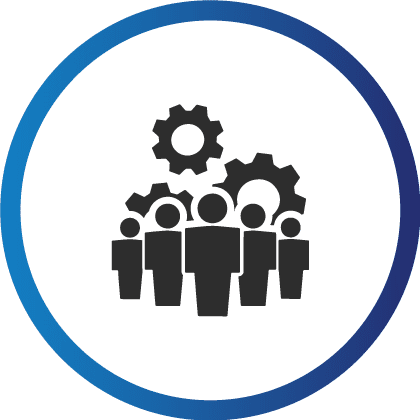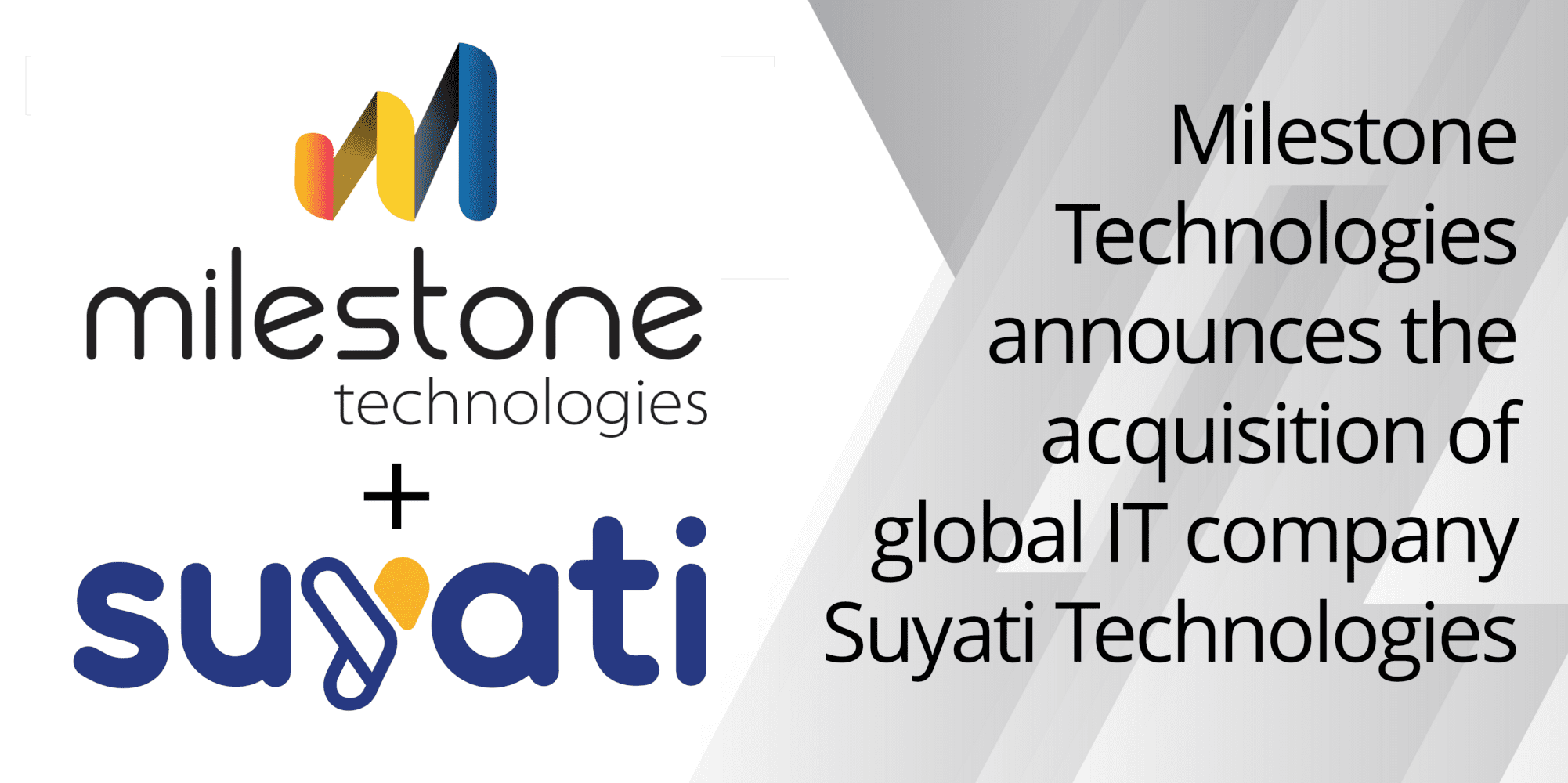With the rapid and ceaseless evolution of technology, digital transformation promises to remain a top priority and central topic of discussion in the tech industry. From leveraging cutting-edge technologies to experimenting with new methodologies and processes, active and continual digital transformation is essential for organizations to stay relevant, competitive, and scalable. Though optimizing business through digital innovation is not a new initiative for companies, more than half of IT executives currently believe they are behind in their digital transformation despite their awareness of its importance.
Digital transformation should be thought of as an ongoing, strategic journey through which businesses must navigate over time rather than a definitive endpoint at which they should one day arrive. To avoid falling behind in this journey, companies must proactively plan their advancement through their digital transformation by prioritizing innovative initiatives and keeping pace with the strategic agenda they create. IT teams, then, are entrusted to help lead their organizations through this digital transformation journey, and IT leadership must develop a two-fold digital transformation strategy. This two-fold strategy will guide their own internal team through the journey, but also work to help achieve the business goals of their organization. When made key initiatives, the following strategic IT trends for 2018 will enable IT teams to embrace their role as an important partner within the company and successfully navigate their digital transformation agenda.
 1. Leverage Intelligent Automation
1. Leverage Intelligent Automation
Intelligent technology and automation were top trends in 2017, but in 2018 companies will leverage the benefits of both via intelligent automation (IA). Going beyond robotic process automation (RPA) which uses software robots to perform repetitive tasks, IA employs capabilities like machine learning, pattern recognition, incident analysis, and intelligent analytics to provide businesses with valuable, actionable, and consolidated insight into operations across their organization. With repetitive tasks automated, IT personnel can refocus their time and efforts on higher value, more innovative initiatives to help propel their company through their digital transformation journey.
One of the most impactful applications of IA is to service desk operations. When integrated with IA, ticket creation, diagnosis, assignment, escalation, and resolution become automated and intelligent processes, enabling service desk technicians to provide more accurate and timely end-user assistance. Using pattern recognition and contextual analysis, IA platforms gather and analyze incident data to identify issue patterns and produce reports. IT teams can then use the insight from these reports to facilitate strategic and proactive service improvements and make more informed decisions about how to enact their digital transformations.
Though Gartner predicts that intelligent platforms will become foundational for most IT organizations in 2018, companies must be properly prepared to make the transition to intelligent automation. Deploying IA involves layering the platform on top of an existing IT foundation, so it’s critical that sound fundamentals like documented processes and secure toolsets are already in place in the IT infrastructure. Moreover, there are various possible applications of IA, including network security and data center operations, so it’s important to explore which options best suit the goals of the business and its unique digital transformation agenda.
 2. Fortify IT Teams
2. Fortify IT Teams
As organizations move through their digital transformation journeys, they’ll discover the necessity of bolstering their IT teams, both in number of personnel and diversity of skillset. Indeed, 70 percent of businesses with 5000 or more employees plan to hire additional IT professionals in the coming year. But while IA and other innovative technologies will undoubtedly transform IT infrastructures and the way they operate, they will also change the roles and processes IT personnel will perform and the skillsets necessary.
70 percent of businesses with 5000 or more employees plan to hire additional IT professionals in the coming year.
Not only does this mean that advanced technologies will present new challenges to existing personnel expertise, but they’ll also require employees to take on roles as “versatilists” who perform a variety of duties within IT, many of which will necessitate more business and soft skills rather than technical aptitude alone. The importance of communication, collaboration, leadership, and other interpersonal skills will become increasingly evident as IT teams engage with other stakeholders in the company to drive the business’ digital transformation agenda forward. Moreover, innovative initiatives will also mean more complex IT processes, so ensuring that these processes are established, documented, and streamlined will be essential to enabling these individuals’ success in their new and diversified roles.
A company that opts to deploy an IA platform as a part of their digital transformation will require professionals who specialize in automation tools to ensure a successful implementation. Moreover, IT employees whose duties formerly consisted of performing the repetitive tasks that are now automated will see their responsibilities shift and must proactively seek out opportunities to acquire new skills that can bring value to the team. In turn, IT leadership must empower their team’s development and enable them to explore alternative skills by providing the tools and training necessary to acquire new capabilities. Additionally, an implementation as transformative as IA will also have ramifications that will be felt to certain degrees in other business units throughout the company. As such, IT leaders will need to communicate and collaborate with other company leadership during the planning and execution phases of the implementation to ensure all parties affected know what to expect.
To ensure that their team remains fortified throughout their digital transformation journey, IT leadership must actively foster innovation, proactivity, adaptability, transparency, and collaboration, as intrinsic aspects of their department culture. Successful digital transformation initiatives require professionals who proactively seek out opportunities for technological, methodological, and process innovations within their organization and who are willing to embrace the reallocation of their responsibilities along the way. Moreover, IT teams that make exceptional communication and collaboration skills a part of their culture position themselves to work effectively with other stakeholders to shape and achieve the digital transformation initiatives of the organization as a whole.
 3. Focus on the Customer Experience
3. Focus on the Customer Experience
Customers today have more influence over organizations than ever before, so whichever initiatives companies choose to pursue as a part of their digital transformation strategy, they will likely share a goal of enhancing the customer experience (CX). With new communication technologies and enhanced social media platforms transforming CX into an immersive experience, customers have come to expect and demand more as organizations struggle to keep pace.[v]Indeed, delayed digital transformation progress in 2017 will translate into customer expectations exceeding organizations’ ability to provide a satisfactory experience in 2018.
A customer-centric approach to digital transformation will require IT teams to embrace their two-fold role as both service providers to end-users within their organization and as key players in increasing their organization’s external customer satisfaction and retention rates. Service desk technicians, for example, are an important part of fulfilling this two-fold role. They work to keep their internal customers—end users—productive and optimized, so that end users can work to exceed external customers’ expectations.
Implementing innovative tools that function to enhance CX should be a priority for organizations’ digital transformation strategies. IT teams can help enhance their organization’s reputation among customers by leveraging innovative tools like IA in their service desk operations to more efficiently and effectively serve their end users who serve external customers. As CX moves to the fore as a key part of digital transformation strategies, soft skills are becoming an essential skill for IT personnel. Promoting refined soft skills will require an internal strategy shift for IT leaders who must foster this as a cultural element of the team.
Leading Your Organization to Success in 2018
Whatever your organization’s goals for 2018 might be, strategizing your digital transformation journey is key to success. Enacting these three IT trends as a part of this strategy will help your company make the technological, methodological, and cultural transformations that will propel your organization through your journey. From leveraging transformative platforms like intelligent automation, to ensuring that your IT team is empowered in their new dynamic roles and focusing on the customer experience as a renewed priority, each of these strategies will enable businesses to achieve their objectives in 2018 and position themselves to scale into the future.
[ii] Gartner Top 10 Strategic Technology Trends for 2018
[iii] The 2018 State of IT
[iv] Pace Yourself for Gartner Top Strategic Predictions for 2018 and Beyond
[v] Gartner Top 10 Strategic Technology Trends for 2018
[vi] Forrester Predictions 2018: A year of reckoning




